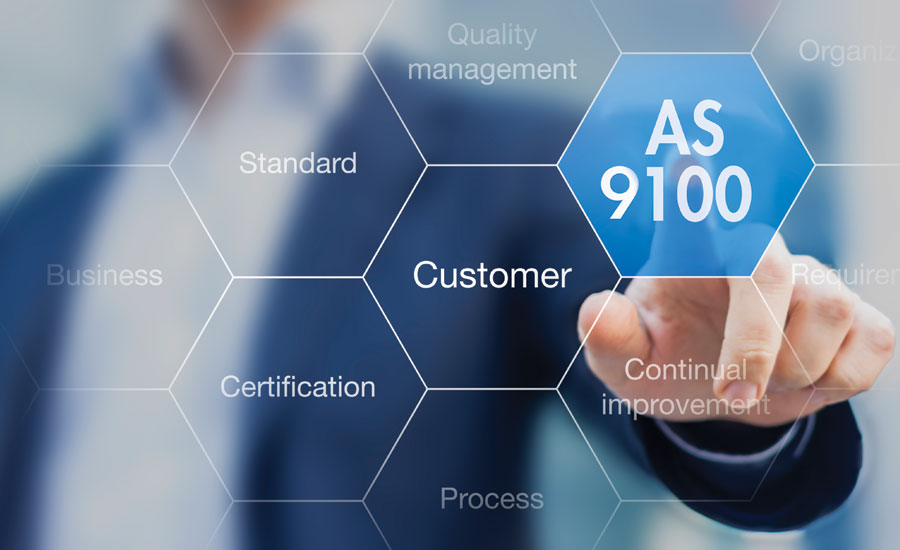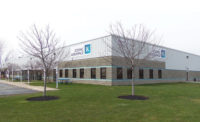When Exact Metrology bought an industrial computed tomography scanner, it opened the door to inspection services for the aerospace industry. But to fully realize its new, expanded customer base, Exact needed to enhance its quality management system to earn AS9100C (or AS9100:2009) certification.
AS9100, the standardized quality management system for the aerospace industry, builds on the foundation laid by ISO9001. It adds requirements specific to the aerospace industry’s elevated quality control needs, supplementing ISO9001 with additional requirements for product safety, configuration management and critical items, among others.
“When you have products that affect the flying public, where we have our war fighters, where we have people going up in space—we have a little bit of a higher expectation from a quality perspective because human lives are on the line,” says Buddy Cressionnie, of Lockheed Martin and the Americas 9100 Writing Team Leader.
To help ease the pain of implementing a new quality management system, Exact chose to hire a third-party consultant to guide the process and provide software.
“They helped us write procedures that were to the standard,” Exact Metrology General Manager Joe Wright says. “They helped us change our procedures and change our verbiage to make sure we were complaint.”
Consultants began by meeting with Exact to perform a gap analysis in the spring of 2015. From there, Exact worked through the list of action items one-by-one.
“Being that we were already doing business with some aerospace companies, we already had a lot of the procedures in place due to customer requirements,” he says. “So the movement forward wasn’t as painful as some.”
NOTES OF IMPROVEMENT
“The one requirement that was probably the most challenging for us was the thought process of risk assessment,” Wright says. “That was kind of a new thought process for us. But once we got ahold of it, I think that was one of the things that improved us the most, because now we started looking at jobs up front and started evaluating the pain before we get farther into the process. We’ve done it before, but it was never that structured.”
He said the standard’s emphasis on risk assessment helped Exact take a closer look at the financial risk of a potential job, in addition to the technical or practical challenge of a task that his team naturally focuses on.
“So that kind of made us step back and see there’s more risk than ‘can we do it?’ or ‘can we do it properly?’” he says. “There’s also a financial risk assessed, and that was a real eye opener.”
Another item that tightened Exact’s procedures was foreign object detection. “Where, again, that was another thing we were doing, but we weren’t documenting it or taking it to that next level.
“So, with aerospace being a little different than the average Joe casting shop or machine shop, that was something that was a little different from our process.”
After Exact worked through its list of action items from the first gap analysis, consultants brought in an auditor to perform another check before the first external audit from an accredited registrar. A second, final audit was performed before Exact earned its AS9100C certification in January 2016, about about nine months after the process began.
Once a company is certified, it is added to a searchable database of conforming businesses, which is one of the biggest business benefits, Wright says.
“Your audit info and all your third party information is all posted to that website,” he explains. “So purchasing people can go on that website and see who’s got the credentials and who’s available to do that work. So our hope is that with our records and the way we approach our quality system, we draw more business from people aware of us.”
REVISION D
Wright says Exact did find one overarching challenge during AS9100 implementation—taking the standard’s language—written for part manufacturers—and adapting it to suit a service business like Exact.
That translation from product to service should be less belabored when Exact works to recertify to the newest version of the standard.
The ISO9001 update last year changed language to reflect both products and services, and the new AS9100 follows suit.
Released in 3rd quarter 2016, AS9100D (or AS9100:2016) follows in the footsteps of the ISO9001 revision late last year. Companies currently certified to AS9100C have until September 2018 to become recertified to AS9001D.
Wright says Exact will likely look to recertify to the updated standard sometime in 2017, and will likely again utilize the services of a third-party consultant.
WHAT’S NEW IN REVISION D
Like its base standard, ISO9001, the new AS9100 leaves behind the previous eight-clause structure and adopts the 10-clause Annex XL structure.
“I think a lot of people might be concerned, ‘what is this new structure about?’ or ‘does that completely change things up?’” Cressionnie says. “And that is really not the case. I think when people look, they will be amazed. Once they understand the structure, first of all they’ll think that it makes a lot more sense, also they’ll think that while things have moved around, the focus is pretty much the same.”
AS9100:2016 sees some alignment in risk-based thinking, which was new to ISO last year but did exist in a different form in AS9100:2009.
“Our goal was first in 2009 to introduce the concept of product risk management … and then in the next iteration we would come up with risk-based thinking for the whole QMS. ISO has already taken our lead and done that for us,” he says. “That was great that we were in lock step with what ISO was doing.”
Changes in the ISO9001 standard are also reflected in the need for more flexibility in documentation in the new AS9100.
“The standard has always allowed organizations to determine what level of documentation they have within their system that makes sense and ensures product conformity and on time-delivery of products,” he says. “The area that ISO9001, and also AS9100, has given us flexibility in is now they don’t have to have ‘documented’ procedures. You still have to have the same levels of controls. But they don’t have to be documented procedures. Gone are the days when you had a three-ring binder of procedures and you’d have to pull one out.
“There’s now smarter (electronic) ways to go do that.”
Cressionnie says there is also more emphasis on product safety in the 2016 D revision, meaning additional controls with regards to end-supply chain purchasing, largely because of the increasing complexity of the supply chain. “In the past many of the OEMs built about 80 percent of the product,” he says. “Now we only build 20-30 percent of the product.”
New additional or enhanced sections of AS9100 include human factors, preventive action, counterfeit parts, project management, configuration management, post-delivery support, and product realization and planning.



